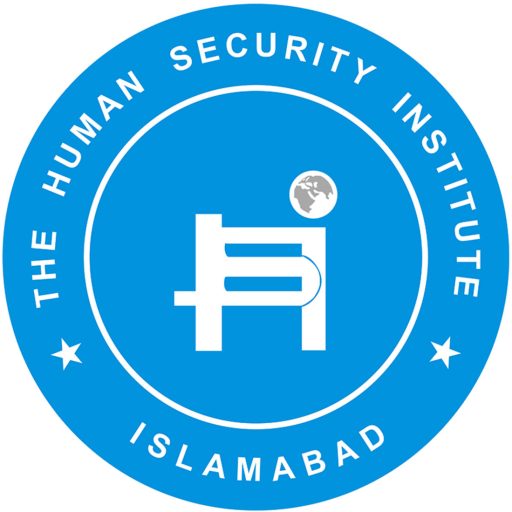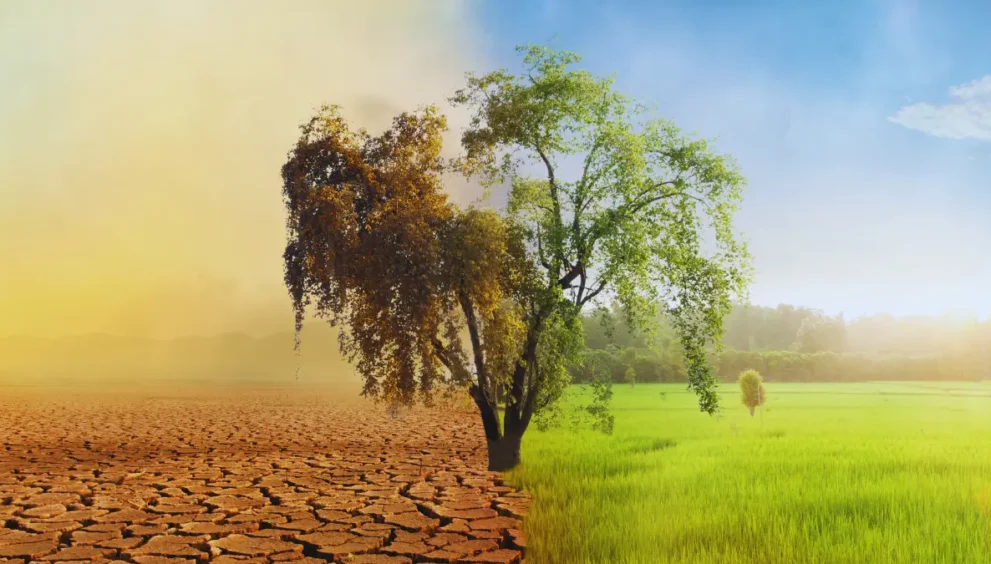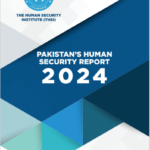By Anzah Imran
The twenty-first century has witnessed increasing adverse impacts of climate change, gaining significant global attention by being one of the pressing issues of recent times. The climate crisis, having gained global attention, has redefined the emphasis from simply addressing environmental concerns to effectively dealing with security concerns due to its effect on an existential level. Pakistan has been globally known as one of the most vulnerable countries to climate change. It has been bearing the brunt of the climate crisis in recent years and has experienced several serious impacts of the climate crisis such as evolving weather patterns and disastrous floods. These adverse effects are forecasted to intensify with time and such climate-induced catastrophes like environmental degradation and air pollution are expected to negatively influence Pakistan’s economy. It has been estimated that by the year 2025, climate-related catastrophes could bring down Pakistan’s GDP by 18-20%. Hence, the depletion of natural resources coupled with climate change, increasing population, and non-sustainable development strategies significantly impact the security and stability of the country.
Environmental security is believed to be a non-traditional security threat, but as a state’s national security includes both traditional and non-traditional security threats, environmental security can also be viewed as an important part of national security. Interestingly, bringing attention to the intensity of the threat of climate change to humanity, Noam Chomsky declares climate change and nuclear weapons as two of the greatest global threats to humanity.
Furthermore, Barry Buzan and Ole Wæver’s theory of securitization offers an understanding of how environmental issues have become a key concern in Pakistan’s national security in Pakistan. According to the theory, by underlining the climate crisis as an imminent threat to national security, individuals and governments need to show more concern for these issues. Thus, implementing the securitization theory to environmental challenges could help in further prioritizing the matter coupled with fostering a sense of urgency to encourage policymakers to undertake relevant actions. Similarly, the increased.
- Anzah is working as a Media Officer at THSI.
- Reliefweb, “Disaster Management Reference Handbook – Pakistan (June 2021) – Pakistan,” ReliefWeb, June 22, 2021
- Juan D. Barón, Mary Bend, Elena Roseo, Izza Farrakh, “Floods in Pakistan: Human Development at Risk”, World Bank, November 2022.
- “Pakistan Country Climate and Development Report“, World Bank Group, November 2022.
- Zahidullah Khan, and Moazzam Durrani. “Environmental Degradation: A Threat to Pakistan’s National Security.” Journal of Culture and Heritage Studies (jchs) 1, no. 01 (2023): 41-56.
- Noam Chomsky, Who rules the world? Metropolitan Books, 2016.
- 16 Christina Pazzanese Harvard Staff Writer, “How Climate Change Will Impact National Security,” Harvard Gazette, November 24, 2021
Risks of environmental change, including droughts, floods, and fires, could result in a humanitarian crisis. Institutions and governance greatly impact a post-climate-induced shock. Moreover, according to Joshua Busby, the degree of security consequences arising from climate change is determined by the interaction of government capacity, international aid, and political marginalization.
In Pakistan, the climate crisis has gained prominence not only in the government but in civil society organizations as well, acknowledging its repercussions for national security and perceiving it as a threat greater than terrorism. In Pakistan’s Vision 2025 document, the government professed climate change to be a security threat and has been engaged in developing an extensive Climate Change Policy. Several plantation drives and programs have been introduced in compliance with land restoration, desertification and drought resilience. The policy focuses on both mitigation and adaptation methods to tackle climate change, aiming to strengthen sustainability and resilience. To manage multiple elements of Pakistan’s response to the climate crisis, the Prime Minister’s National Climate Change Council has been set up accordingly.
Pakistan’s ranking as the eighth most susceptible country on the Global Climate Risk Index highlights its vulnerability to the negative consequences of climate change.11 Recent occurrences, such as the 2022 heatwave that claimed over 1,000 lives and exacerbated water scarcity, underscore the critical need for action. Climate-related calamities are expected to reduce Pakistan’s GDP by 18-20% by 2025, with the 2010 floods alone causing $10 billion in damage.12 Environmental degradation, water scarcity, and pollution all pose substantial risks to Pakistan’s economy and stability. Despite addressing climate change as a security risk in its 2025 strategic agenda, the government has challenges in implementing policies due to governance problems and resource limits.13 To address these issues, we must strengthen climate adaptation strategies, improve governance and institutional capacity, mobilize financial resources, and overcome socioeconomic and political impediments.14 These measures are critical for Pakistan’s future security and stability in the face of a coming climate crisis.15
8. Joshua W. Busby, States, and Nature: The Effects of Climate Change on Security, Cambridge University Press (Cambridge: Cambridge University Press, 2022)
9. Hamid Mir, “Opinion | Climate Change Is a Bigger Threat to Pakistan than Terrorism,” Washington Post, July 14, 2022.
10. Policy Framework, “Pakistan Vision 2025 | UNEP Law and Environment Assistance Platform,” leap.unep.org, May 29, 2014
11. Rina Saeed Khan and Thomson, “Pakistan Passes Climate Change Act, Reviving Hopes – and Skepticism,” Reuters, March 24, 2017, sec. APAC
12. Hussain, M. M. B (2014). Climate change and environmental security. Climate change and environmental security. https://ipripak.org/
13. Malik, A. (2022). Pakistani environmental policy analysis: A theoretical perspective. Journal of Development and Social Sciences, 3(4), 507–521. https://doi.org/10.47205/jdss.2022(3-IV)48
14. Vaughn, B., Carter, N.T., Sheikh, P.A., and Johnson, R. (2010). Security and the Environment in Pakistan (CRS Report No. R41358). Congressional Research Service. https://sgp.fas.org/crs/row/R41358.pdf
15. Busby, J. W. (2007). Climate change and insecurity: Mapping Africa’s vulnerabilities. Washington Quarterly, 31(1), 149–169. https://direct.mit.edu/isec/article-abstract/37/4/132/12083/Climate-Change-and-Insecurity-Mapping.
16. Buzan, B, and Waever, O. (2003). Regions and Powers: The Structure of International Security (Vol. 91). Cambridge University Press.
17. Anzah Imran, Media Officer THSI (2024). The Human Security Index (THSI), Islamabad, Pakistan. https://thehumansecurity.org/



